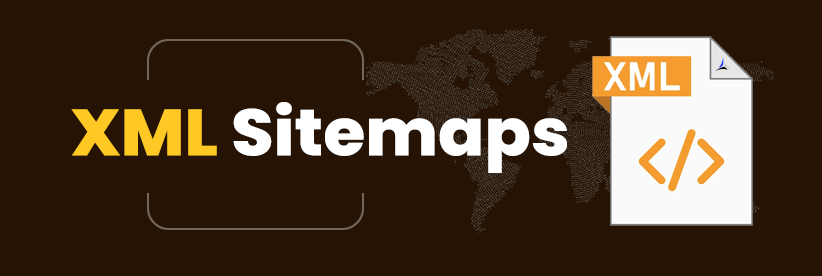The Importance of XML Sitemaps for SEO
An XML sitemap enhances the visibility and indexability of your website by listing pages on the content page, thereby improving its appearance.

The Importance of XML Sitemaps for SEO
An XML sitemap makes your website readable for search engines through listing pages on the content page. It increases the appearance of your website and indexes it on search engine pages.
It is important for a website that contains various web pages because XML sitemaps assist search engines in indexing the web page. Suppose your website has content related to the news or something that needs to be updated timely. In that case, using XML sitemaps can help you measure the changes on web pages.
You can make SEO better by using an XML sitemap. You can submit it to the Google Console, which can assist you in managing your website’s appearance on search result pages.

What is the meaning of an XML sitemap?
An XML site is a way to manage your website. It lists the crucial pages of your website that are expected to be indexed by search engines. XML sitemaps help provide details, like the last changes to a website. It has a machine language that search engines can understand.
What are the Benefit of using an XML sitemap?
The various benefits of using an XML sitemap are as follows:
- Assist pages in easy accessibility: XML sitemaps increase your website’s rank on search results pages and make your website easily accessible to visitors.
- Assist in measuring the website’s performance: You can measure your website’s performance by analyzing the XML sitemap. That can assist you when a web page requires your attention, and you can also follow the right strategy by measuring website performance.
- Increase website crawlability: If you have an XML sitemap on your website, it can be crawled by search engines. That helps index your website on search engine pages.
- Increase the correct indexing chances: Providing details related to your business to search engines will assist in properly indexing your website.
What are the ways to generate an XML sitemap?
An XML sitemap makes your website readable by search engines by listing crucial web pages. This also assists in indexing your website on search engines. Improve website search ranking. with the help of XML sitemaps, which assist search engines in crawling your site.
There are various tools to produce an XML sitemap, such as:
- Sitemap generator: XML sitemaps can be created by using online resources. Using a sitemap tool, you can develop an XML file by entering the URL of your web page.
- Web development tool: You must use a web development tool like a text editor to produce XML files. You must have experience in web development to create sitemaps.
- Content management system on the website: You can create sitemaps by using content management system tools like WordPress.
You must submit an XML sitemap to the Google Console that will assist search engines in indexing your website. Search engines can also crawl your webpage after your XML sitemap submission.
The various steps need to be followed for creating the XML sitemap:
- Collect all URLs of web pages: You need to list all your web pages using tools like the sitemap generator or manually.
- URL code in the format of XML: You must know URL coding that can be learned through online platforms.
- Submission of an XML sitemap to the search console: You must submit your sitemap to the search console by entering the XML sitemap URL.
- Provide details in XML sitemaps: You must provide details like the date of the last changes made to the content page.
Where does the XML sitemap need to be hosted or arranged?
You can organize XML sitemaps for services related to the third party and web server.
A web server is a general way to host the XML sitemap. It takes work to maintain. Web Server is accessible, and you can control your files using it.
A third party is an easy option. In case of the unavailability of technical experts, you can refer to this option. You can find the various services here.
The various factors that affect the hosting of an XML sitemap are:
Cost: You need to make no such charges for XML sitemap hosting. A web server is available for free, through which you can host an XML sitemap. In comparison, third parties are a little expensive.
Control: You need control over the file while hosting an XML sitemap on a web server. You can change the web page according to your needs, which gives you authority. On the other hand, third parties won’t give you control over web pages.
Convenience: Maintaining an XML sitemap on a web server is inconvenient, whereas a third party is more convenient for you to keep.
How to update the XML sitemap
You need to update the XML sitemap frequently. If you made any changes to a web page or added some new pages, you must also update the XML sitemaps. Your website’s discoverability and indexing by search engines can be improved by having this feature.
The updates to XML sitemaps depend on the changes to the website. Suppose you make changes regularly to your website. In that case, you should keep updating the XML sitemap regularly. If you rarely make changes to your website, you can edit the XML sitemaps once a month.
You can update your XML sitemap as follows:
- You can use tools like the sitemap generator.
- You need to keep your XML sitemap updated.
- You must submit an XML sitemap to the search console.
What are the different types of XML sitemaps?
The three types of XML sitemaps are:
- Web page sitemap: This type lists pages on your website. It contains the last date of changes and the URL.
- Image sitemaps: Image sitemaps list images on your website. It contains the file name and URL of the images.
- Video sitemaps: Video sitemaps list videos on your website. It contains the size and URL link of the video.
What are the ways to submit an XML sitemap to Google?
You must follow the steps to submit the sitemaps to the search console. These steps are as follows:
- You need to visit the site of the Google search console.
- You need to create an account and sign in.
- After that, you must click on the “sitemap” tab.
- You must click on the “Add a Sitemap” button.
- You have to add the URL of the XML sitemap.
- Then, you need to click on the “submit” button.
By following these steps, your website can be indexed by Google.
It would be best if you considered various factors while submitting an XML sitemap, including:
- The maximum size of the XML sitemap is required to be 50,000 URLs.
- You must not submit similar URLs in XML sitemaps.
- You need to change your sitemap after adding new pages to your website.
Frequently Asked Questions
XML sitemaps help list URLs of web pages by including the date of modification and so on. In contrast, the sitemaps make the website accessible to visitors.
Having an XML sitemap can improve website indexing by search engines.
Having an XML sitemap for your website is crucial for search engine optimization as it helps crawlers easily index pages. Your website can get high rankings on search engines through an XML sitemap.
There are various benefits to using an XML sitemap, like:
- Helpful in crawling the website.
- XML sitemaps assist in indexing all the web pages.
- It helps find out any errors.
A sitemap is a listing of pages on a website, and an XML sitemap consists of information about the pages in detailed form. The sitemap is related to the menu, whereas the XML sitemap is connected to the description in the menu.
XML sitemaps have various benefits, like:
- It can increase the appearance of your website.
- Search engines can index your website through an XML sitemap.
- It can prioritize the pages.
This is one of the reasons why search engines rank your website through SEO services.
Digital Marketing - News & Updates
Read the latest SEO and marketing market news and the latest news about us.
